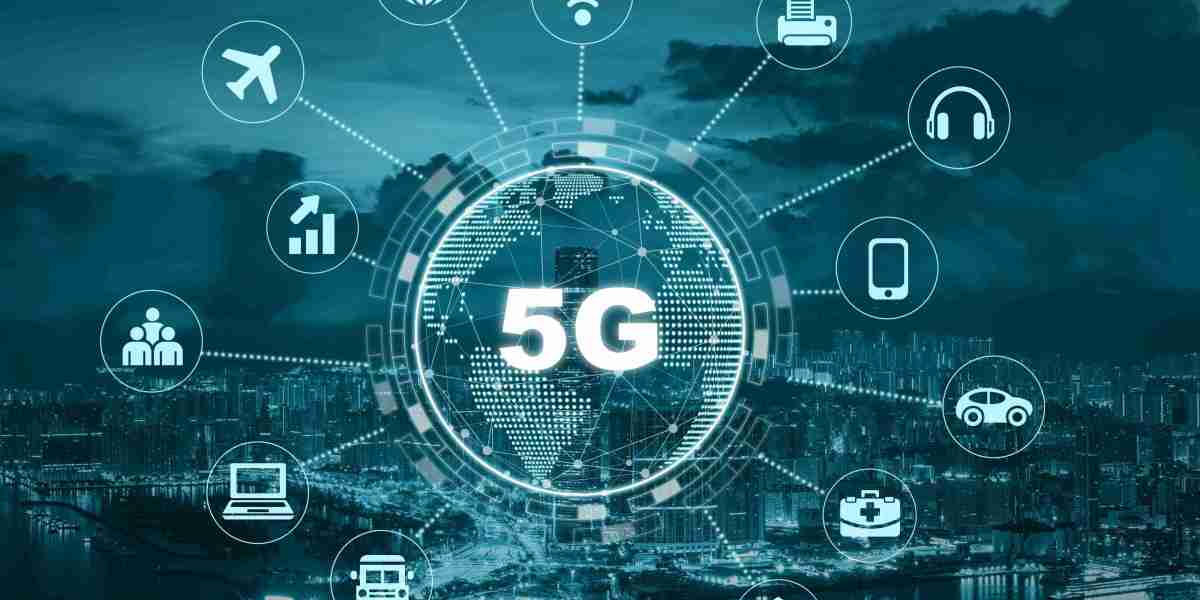The 5G technology market has been steadily growing, with the promise of faster speeds, lower latency, and a connected world. However, despite its numerous benefits, the 5G market faces certain restraints that hinder its widespread adoption. These limitations range from high infrastructure costs to regulatory challenges, and they need to be addressed before 5G can reach its full potential. Below, we explore some of the key obstacles that currently restrict the 5G technology market.
High Infrastructure Costs
One of the most significant challenges in the 5G technology market is the high cost of infrastructure. Unlike its predecessors, 5G requires new base stations, towers, and fiber-optic cables to support its ultra-fast speeds and connectivity. This requires substantial investment from telecom companies, which may delay the roll-out of 5G in some regions. These costs are especially prohibitive in rural or underdeveloped areas, where infrastructure upgrades may not be as economically viable.
Additionally, the cost of acquiring 5G spectrum is another barrier. Governments worldwide auction off spectrum licenses, and the process can be expensive for telecom providers. In some countries, the cost of these licenses has been a significant restraint for smaller operators who cannot compete with larger industry players.
Regulatory Challenges
The 5G technology market also faces significant regulatory hurdles. Governments need to address spectrum allocation, cybersecurity, and public health concerns before widespread deployment can occur. Regulatory bodies often have conflicting priorities, with some focusing on ensuring fair competition, while others prioritize safety and environmental impacts.
Additionally, spectrum licenses are awarded in different ways across regions, leading to fragmented standards that create delays in the rollout. These regulations not only delay 5G deployment but also increase costs for telecom providers who must navigate a complex and evolving regulatory landscape.
Security and Privacy Concerns
With the proliferation of connected devices and the reliance on cloud computing, cybersecurity risks become more pronounced with 5G technology. Data breaches, hacking, and cyberattacks are significant concerns, as 5G will enable the connection of millions of devices, creating more potential entry points for malicious actors.
Governments and enterprises will need to invest heavily in robust security measures to protect sensitive data. The complexity of securing 5G networks, combined with the rapid pace of technology, makes this a critical issue for market growth. As long as the concerns about privacy and security are not adequately addressed, widespread consumer adoption will remain a challenge.
Technological and Operational Limitations
Although 5G promises to revolutionize connectivity, there are still certain technological limitations that need to be overcome. The infrastructure required to support 5G, including small cell technology and fiber-optic networks, is still in the process of being developed. Many regions lack the technological capabilities to deploy these systems efficiently.
Moreover, there is a need for high-density network coverage in urban areas for 5G to function optimally. This will require telecom companies to invest in a network of small cells and base stations, which will not only be costly but may also face opposition from local communities concerned about the environmental impact or potential health risks.
Market Fragmentation and Competition
The 5G technology market is fragmented, with various companies and countries adopting different approaches to deployment. This lack of uniformity creates challenges for manufacturers and consumers alike. For instance, some countries may prioritize specific frequency bands for 5G, while others may choose different bands, making interoperability a challenge.
The competitive landscape is also evolving rapidly, with tech giants such as Huawei, Ericsson, and Nokia fighting for dominance in the 5G space. Smaller players, particularly those in developing countries, may struggle to compete with these well-established companies. This fragmentation can slow the pace of innovation, as well as market consolidation, limiting the growth potential of 5G technology.
Conclusion
While the 5G technology market holds immense promise, several challenges must be addressed before its potential can be fully realized. High infrastructure costs, regulatory challenges, security concerns, technological limitations, and market fragmentation all represent significant obstacles to the widespread adoption of 5G technology. As these barriers are gradually overcome, 5G will undoubtedly reshape industries and improve global connectivity, but overcoming these restraints will be critical to its success.




